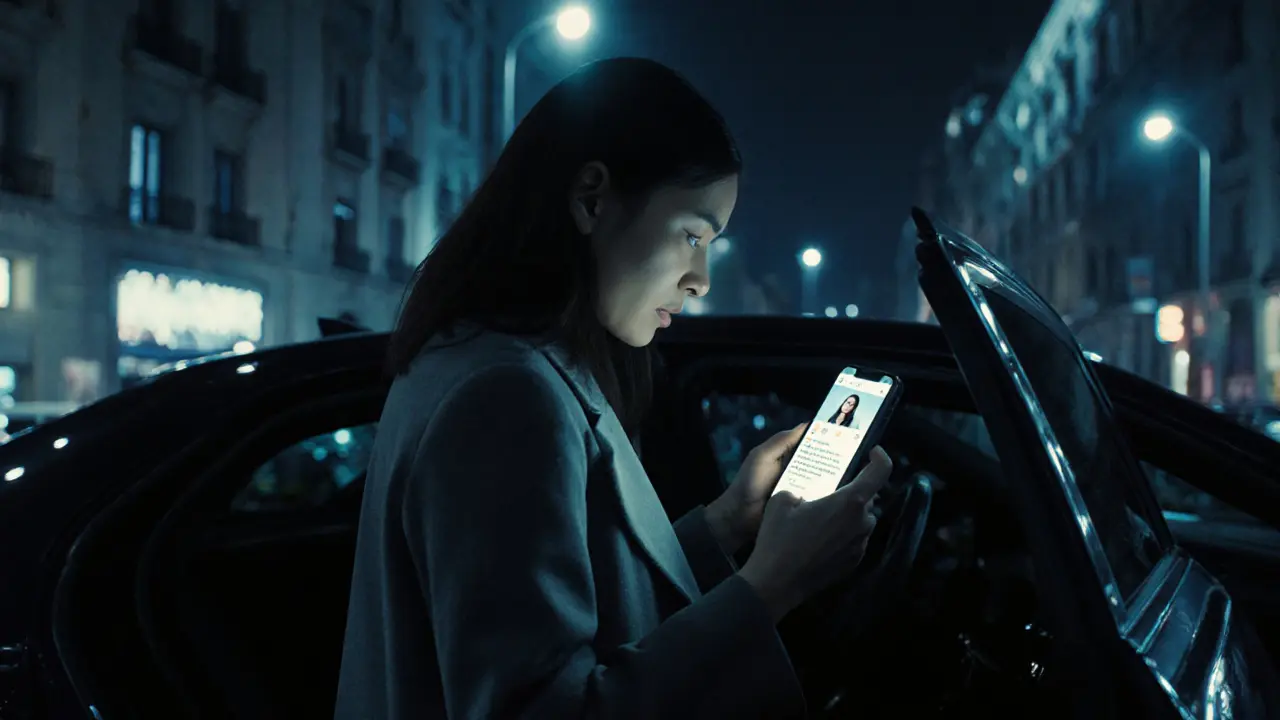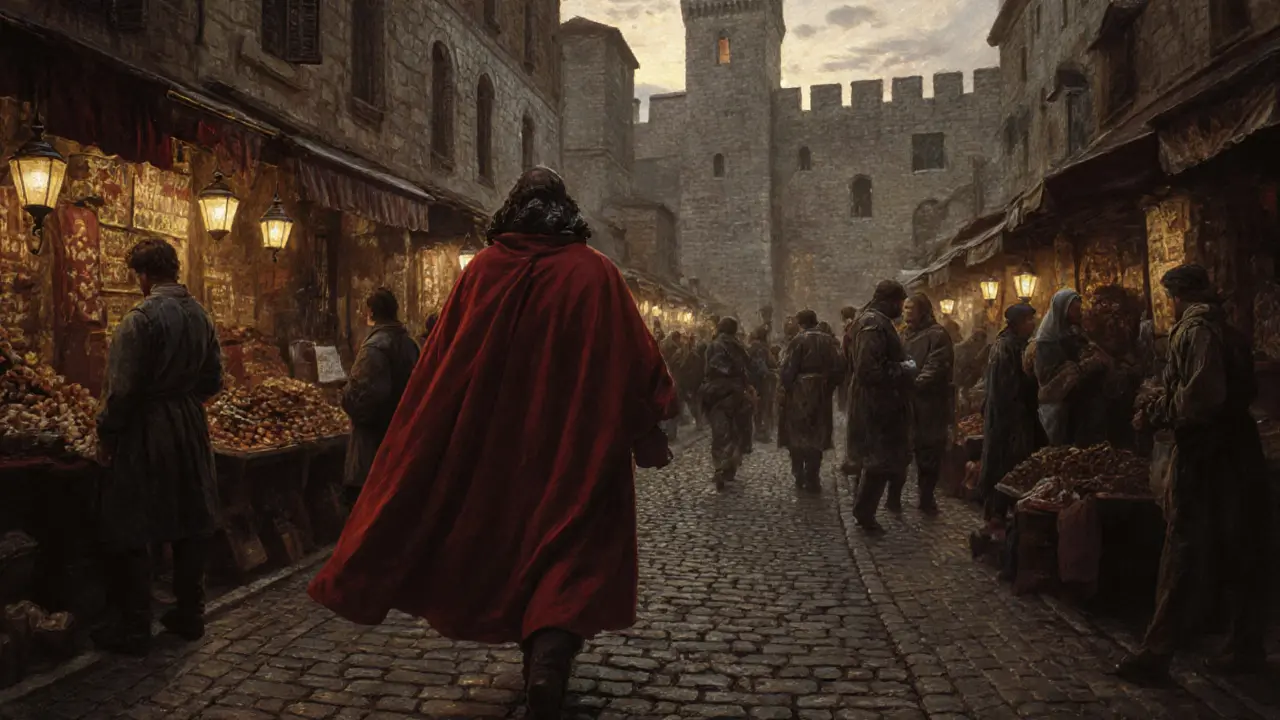Milan wasn’t always known for fashion shows and luxury boutiques. Long before designers took over the streets, the city had another kind of trade-one that thrived in shadows, alleyways, and private rooms. The history of escorting in Milan stretches back centuries, shaped by war, religion, economic shifts, and changing social norms. It’s not a story of glamour, but of survival, adaptation, and quiet resilience.
Medieval Roots: When Sex Work Was Tolerated, Not Criminalized
In the 13th and 14th centuries, Milan was a powerful city-state under the Visconti family. While the Church preached chastity, city officials knew better. Prostitution wasn’t banned-it was regulated. Women who worked as sex workers were required to register with the city, wear distinctive clothing, and avoid certain neighborhoods. They were allowed to operate in designated areas near the city walls, often close to markets or taverns where travelers gathered.
These women weren’t just seen as immoral-they were treated as a public utility. Their presence kept unmarried men, soldiers, and merchants from causing more trouble. The city even taxed their earnings. Records from 1387 show that over 200 women were officially licensed in Milan, making it one of the most organized sex economies in Northern Italy.
The Counter-Reformation and the Crackdown
By the late 1500s, the Catholic Church had regained control over public morality. The Council of Trent (1545-1563) pushed for stricter moral codes across Catholic territories. Milan, under the rule of Saint Charles Borromeo, became a model of religious reform. Borromeo didn’t just preach-he acted. He ordered the closure of brothels, forced women out of licensed quarters, and pushed them into the margins.
But banning didn’t stop the trade. It just made it harder to track. Women began working in private homes, disguised as servants or seamstresses. Some formed loose networks with bar owners and innkeepers who turned a blind eye. The escort trade didn’t disappear-it went underground. And it stayed there for centuries.
The 19th Century: From Brothels to Private Clients
The 1800s brought industrialization to Milan. Factories drew workers from rural areas, creating a booming male population with little access to family life. Brothels reopened in hidden districts like Porta Venezia and Crescenzago, but now they were smaller, quieter, and more discreet. The rise of railroads and business travel meant more foreign men passing through-businessmen, diplomats, engineers. Many sought companionship, not just sex.
By the 1880s, a new kind of escort emerged: the signorina. These were educated women, often from lower-middle-class families, who offered conversation, dinner, and company in exchange for money. Some were pianists, writers, or former teachers. They didn’t advertise. They were referred by word of mouth, through cafés, theaters, or even doctors’ offices. This was the birth of what we’d now call high-end escorting.

Fascism and the Silence of the 1930s
Under Mussolini’s regime, public morality became a political tool. Prostitution was officially outlawed in 1931 under the “Legge Merlin” precursor laws, though enforcement was uneven. Women were arrested, sent to “rehabilitation centers,” or deported to rural areas. But the demand didn’t vanish.
During World War II, Milan was bombed, occupied, and rebuilt. American and British soldiers stationed nearby created a sudden spike in demand. Local women, many widowed or displaced, turned to escorting out of necessity. The U.S. military set up its own rules-soldiers were forbidden from visiting brothels, but private meetings were ignored. After the war, the city didn’t punish these women. It forgot them.
The 1970s-1990s: Liberation, Law, and the Rise of Agencies
The 1970s brought social change. Women gained more rights, birth control became widely available, and sexual freedom became part of youth culture. But Milan’s escort scene didn’t explode-it evolved. The old brothels were gone. In their place came small agencies, often run by women themselves, offering vetted companions for business dinners, events, or weekend getaways.
These agencies didn’t call themselves escort services. They were “companion agencies,” “event staffing,” or “personal assistants.” Clients were lawyers, bankers, foreign investors. The women were fluent in English, French, or German. They dressed well, knew how to navigate galleries and opera houses, and never discussed their personal lives. This was escorting as performance.
By the 1990s, Milan was Europe’s fashion capital. International models, PR agents, and journalists flooded the city. Many of them needed local contacts. Some turned to escort services for translation, introductions, or simply someone to talk to after long days. The line between professional networking and paid companionship blurred.
Today: Digital Platforms and Legal Ambiguity
Italy still bans brothels and pimping, but not the act of selling sex between consenting adults. This legal gray zone is where today’s escort scene in Milan lives. There are no official records, no public listings, no storefronts. Instead, there are Instagram profiles, encrypted messaging apps, and private websites with coded language: “discreet companionship,” “cultural evenings,” “business support.”
Most women working now are in their late 20s to mid-40s. Many have university degrees. Some are single mothers. Others are expats from Eastern Europe, South America, or Southeast Asia. They work independently or through small collectives. Payment is usually cash or cryptocurrency. No contracts. No receipts. No paper trail.
What’s changed? Clients. Today’s clients aren’t just businessmen. They’re tech founders, artists, lonely academics, divorcees, and even tourists seeking a different kind of Milan experience. The demand isn’t for sex-it’s for connection, comfort, and control in a city that can feel cold and impersonal.

Why Milan? The City That Never Stops Moving
Milan has always been a city of outsiders. Merchants, immigrants, artists, and exiles have shaped it. The escort trade has always mirrored that. It’s not about crime. It’s about need. When people move to Milan for work, for love, or for escape, they often come alone. And loneliness doesn’t care about the law.
The city’s wealth, its pace, its isolation-it all creates space for this quiet industry to survive. Unlike Rome or Naples, where the sex trade is more visible, Milan keeps it hidden. That’s not because it’s less common. It’s because Milan prefers discretion.
The Human Side: Stories Behind the Service
One woman, Maria, worked as a translator during the day and met clients at night. She told a friend in 2019: “I don’t sell my body. I sell my time. My presence. My ability to listen when no one else will.” She had a master’s in literature and supported her younger brother through university.
Another, Sofia, came from Bucharest in 2017. She didn’t speak Italian at first. She learned by reading Milanese newspapers while waiting for clients. Now she hosts small dinner parties for expats and earns more than she ever did as a nurse back home.
These aren’t exceptions. They’re the norm.
What’s Next?
Italy is one of the last Western European countries to avoid legalizing sex work. But pressure is growing. In 2023, a group of Milanese women filed a petition calling for decriminalization, citing safety, labor rights, and mental health. The city council ignored it-but the conversation started.
Meanwhile, AI chatbots and virtual companions are rising. Some clients now prefer apps that simulate conversation. But human connection still wins. People still want to sit across from someone, share a glass of wine, and feel seen.
The history of escorting in Milan isn’t about morality. It’s about people adapting to survive in a city that moves too fast to care who’s beside them.
Is escorting legal in Milan today?
Yes and no. Selling sex between consenting adults is not illegal in Italy. But organizing, pimping, or running brothels is. That means individual escorts can work legally, but agencies, advertisements, and third-party involvement are not allowed. This legal gray area makes the industry invisible but not gone.
How do escorts in Milan find clients today?
Most use encrypted apps like Telegram or Signal. Others rely on private websites with vague language like "companion services" or "cultural evenings." Social media profiles on Instagram or LinkedIn are often used to build trust-photos show travel, art, or dining, never explicit content. Word of mouth among expat communities and business circles remains the most reliable source.
Are escorts in Milan mostly local women?
No. While some are Italian, a large portion are foreign nationals-especially from Eastern Europe, Latin America, and Southeast Asia. Many come on tourist or student visas and stay because they can earn more in Milan than in their home countries. Language skills and cultural adaptability matter more than nationality.
Do clients in Milan mostly want sex?
Not always. Many clients seek companionship-someone to go to a museum with, to have dinner with, to talk to after a long day. Some are lonely expats. Others are older men who feel disconnected. The most common request is for "discreet presence," not physical intimacy. Sex is often an option, not the goal.
Has the fashion industry influenced escorting in Milan?
Absolutely. Fashion weeks bring thousands of international buyers, journalists, and influencers. Many hire local companions to navigate the city, translate, or simply accompany them to events. Some models and stylists also work as escorts part-time. The industry’s focus on appearance, networking, and image made Milan a natural fit for high-end, image-conscious companionship services.

